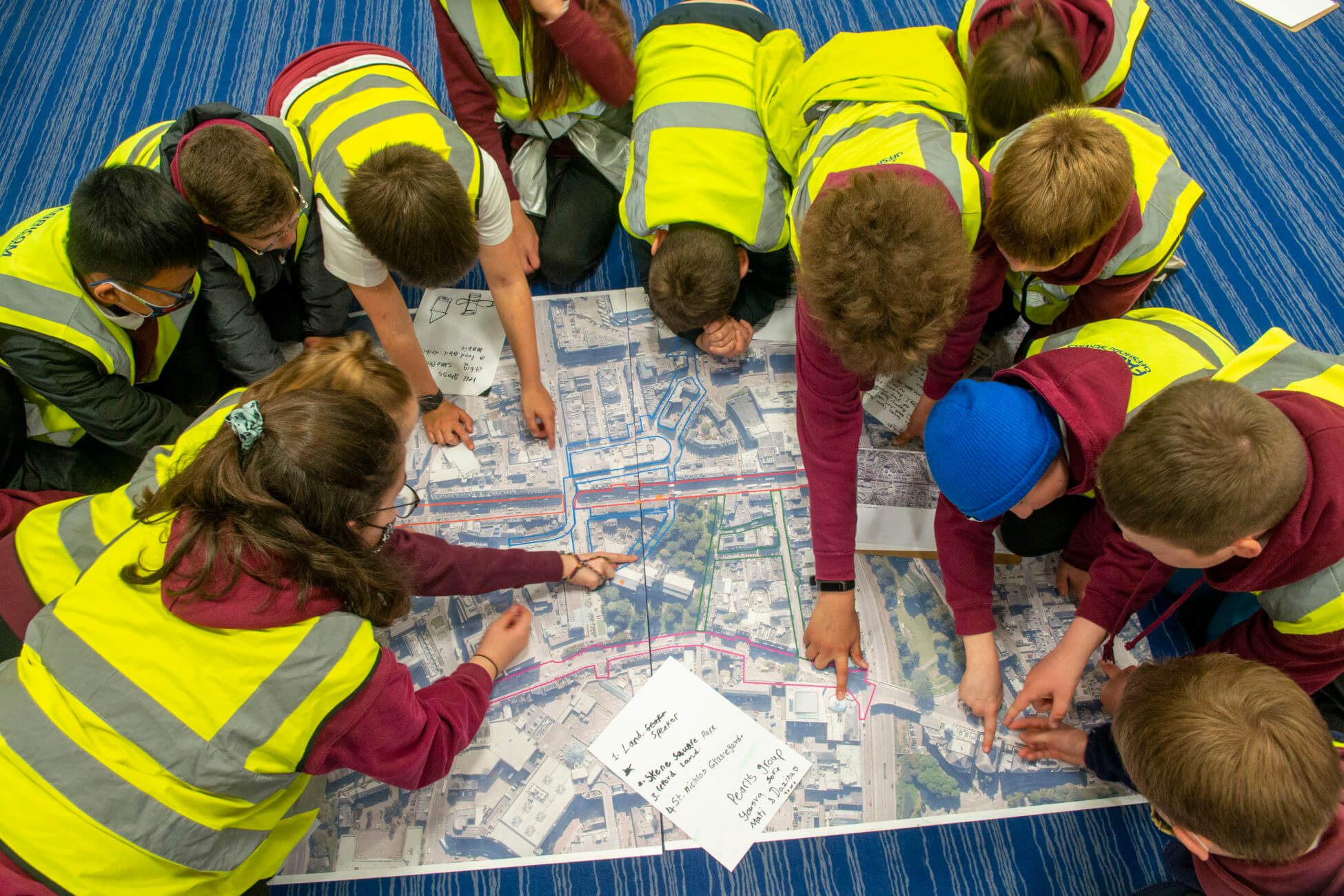
Rights at work
Planning
Claire McArthur, Interim Policy & Strategy Manager in the Planning Department at Aberdeen City Council, explains how children are helping to design the city.
What are the benefits of involving children and young people in local planning?
Leaving to one side the fact that within Scottish planning law, and in line with the UNCRC, children have a legal right to be involved in local planning decisions – and that the process is always really fun – children offer planners an entirely different viewpoint that adults don’t necessarily hold.
They tend to think about the “art of the possible” and not the potential constraints, or how much things might cost. They rarely focus on how plans will affect them as individuals, but whether they will benefit the community. And we get these more open-minded and less constrained viewpoints that don’t only challenge the norm, but also challenge us as professionals to think differently.
What does this process look like in Aberdeen and what are you hearing from children?
Aberdeen’s Planning Department has a long history of youth engagement and in 2012 we were one of the first local authorities in Scotland to really try and involve children in the preparation of our local development plan – our ten-year strategic framework for development across the city. This is becoming standard practice now, but at the time we were winning awards.
Ten years on, and as part of our ambition to be recognised as a UNICEF UK Child Friendly City, we’re currently involving children and young people in the redesign of our city centre which, like other places, has struggled to recover from the Covid-19 pandemic. This redevelopment includes our beach which is only 15 minutes away – and which we all found a new appreciation for during the pandemic.
We’ve been engaging children in their classrooms using Google Meets, but in the past fortnight we’ve also restarted face-to-face sessions, taking over 100 children to visit the city centre and beach and hearing directly from them about how they feel in those spaces and what they’d like to see in the future. We’re looking at lots of opportunities for incidental play – so not necessarily brand-new play equipment, but how they can use street furniture and the urban realm to interact in a playful manner while other groups use the space in different ways.
One of the biggest things to come across is their desire for inclusivity and sustainability. They’re asking us how the space is going to work for disabled people. And how we think it will adapt as the climate crisis develops. They want to know whether the materials we use will be as natural as possible and what their impact on the natural environment will be – including the dolphins we have out at sea. These are important questions that challenge us to justify and explain our proposals in different ways.
How do children’s rights inform your work with children and young people?
Children’s right to be heard is clearly at the heart of our engagement work, and we want to really broaden the groups of children we’re reaching. We’re working with children outside of school settings, partly because at school they might feel they have to give an answer they think we or their teachers want them to give, but also because there are children outside mainstream education whose views we should be hearing.
We’re also very keen that children feel respected as children. So not consulting them as future participants in public spaces, but as current participants who use the space in their own unique way.
Finally, being accountable and actively communicating with children is so important, especially given the long timescales of large public realm projects.
There will be lots of moments in the design process when we’re not consulting because decisions have been made, but even then we need to be keeping children updated on our progress – just as we do with any other stakeholder. And we need to do that in an age-appropriate way. So, for example, when we asked children to design and send us postcards from the “Aberdeen of the future” as part of a consultation process, we sent them one back with an image of one of the designs they’d helped us to shape. This was our child-friendly “You Said, We Did” and worked so much better than the usual email back to their teachers.
We’re all aware of the rights of the child in relation to our responsibilities as public officers, but I don’t think any of us see it as something we just have to do. We all see the value and huge benefits of bringing children into the design of the public realm and that’s how we’re building our city.


